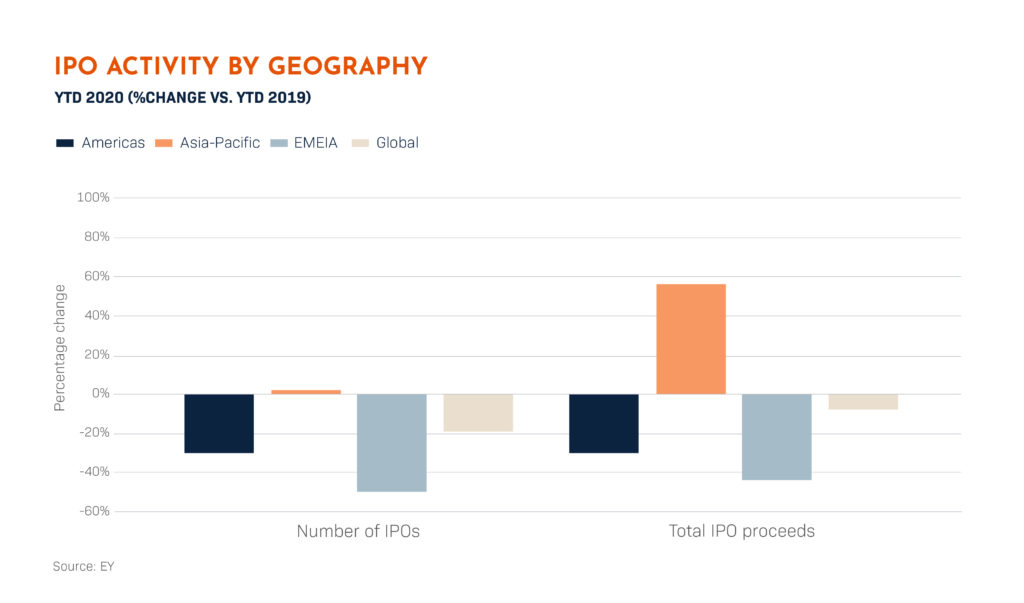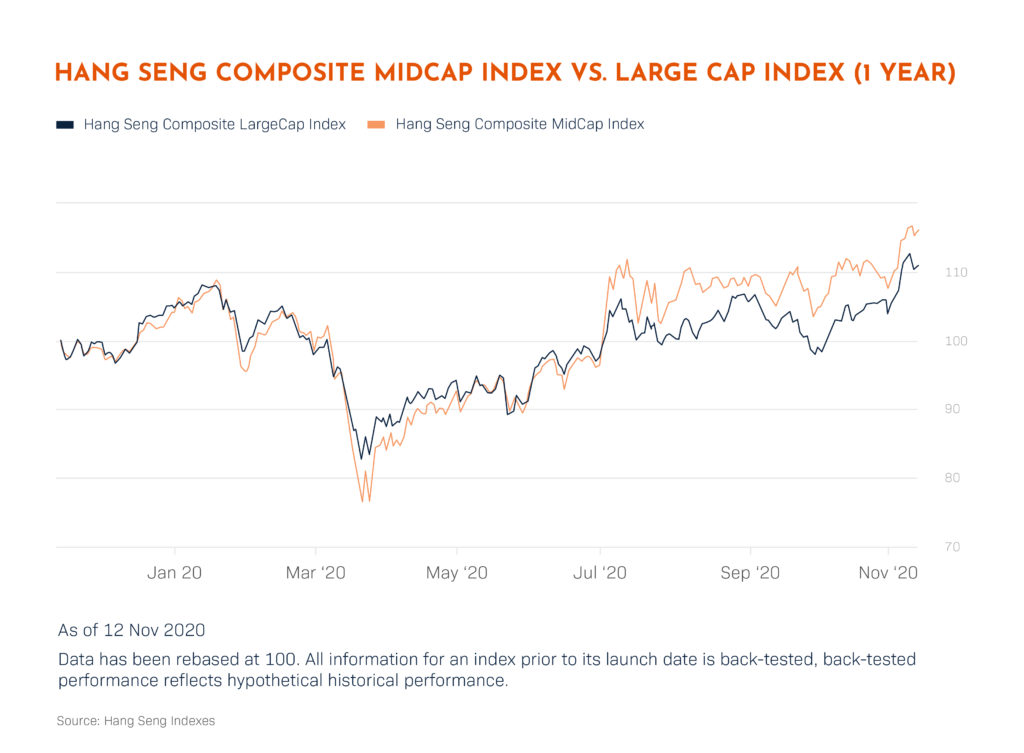Assessing the untapped potential of equity-backed lending in Asia’s high-growth markets
Global banks have made significant inroads in the region. However, we would argue that Asia’s potential in the private credit space is still far from being fully realized on multiple fronts.
According to recent Bloomberg figures, the global private credit market is worth an estimated US$800 billion. [1] Asia is a disproportionately small slice of that pie. In fact, by some estimates, Asia Pacific receives less than 10% of capital allocation to private credit strategies, even though the region delivers around one-third of global GDP. [2] This mismatch signals substantial untapped demand in view of the region’s long-term growth trajectory.
The rapid evolution of Greater China and other Asian economies, and rise of the region’s markets, offer huge opportunities for equity-backed lending, a versatile and innovative form of private credit in which owners of liquid stocks employ these assets as collateral to access capital.
Asia Pacific stock markets have remained relatively robust engines of progress and prosperity even among the havoc that Covid-19 has brought to markets worldwide. One indicator of their vibrancy is the surge in IPO activity. In the first half of 2020, share listings in Greater China jumped 29% from the same period last year, and the amount of money that was raised rose 72%. The Hong Kong and Shanghai exchanges led the charge – underscoring the resilience of these two financial hubs. [3]

Benchmarks in South Korea, Japan and Taiwan have managed to post healthy gains over the last year despite at times volatile conditions. [4] Markets have been supported by both abundant liquidity and strong appetite from investors within in the region. Hong Kong’s market, for example, saw record inflows over the first quarter from the Connect scheme providing access to mainland Chinese investors. [5]
Interestingly, while the region has no shortage of corporate superstars, there are many indications lesser-known – but no less dynamic – mid-cap firms are where a lot of growth potential and investor interest are concentrated. For much of 2020, Tokyo’s Nikkei 225 benchmark has been roundly outperformed by the Nikkei 500, [6] a broader pool of more new economy and services-focused enterprises. Similarly, in Hong Kong the Hang Seng Composite MidCap Index produced around double the returns of its large cap counterpart. [7]

Investing in the region’s future
All this points to a growing and diverse network of regional investors who hold an expanding pool of high-potential assets, but can access only a limited range of funding opportunities. It is exactly this gap that equity-backed lending is designed to address.
We have identified chronically underserved borrower segments, especially in places like Hong Kong and South Korea, where investors and UHNWIs are keen to obtain funds for a range of purposes, from bolstering family businesses to diversifying investments. Yet, global banks are not positioned to offer effective solutions, and these investors are often unaware there is a sustainable means for them to access funding based on their equity portfolios.
This is why, after 20 years in this highly specialised sector, we now find ourselves registering the largest volume of new business among asset owners in Hong Kong, mainland China and South Korea. These markets continue to provide a healthy pipeline of transactions as the demand for liquidity – and financial security – increases.
This dynamism is precisely why EquitiesFirst is committed to investing further in our Asia operations. Our core Asia markets include China (Hong Kong), South Korea, Singapore and Thailand. We now have six offices in the region, most recently expanding our onshore China presence with offices in Beijing and Shanghai. The unique elements of our approach to equity-backed lending, which carefully balances the interests of lender and borrower, makes bricks-and-mortar presence key to engaging with each market and building long-term local partnerships.While other forms of funding will always have their place, our expertise and long-term approach to lending against equity allows us to be flexible and constructive on a broader population of assets. Listed shares with lower liquidity and higher volatility are difficult for banks to manage via traditional margin loans, but we understand that underlying these shares are often robust and sustainable businesses. By partnering and aligning interests with key shareholders, we see a tremendous opportunity to be a part of Asia’s growth story and the development of the regional private credit market.
[1] https://www.bloomberg.com/news/articles/2020-05-22/private-credit-market-to-see-m-a-as-virus-forces-consolidation
[2] https://www.asianinvestor.net/article/asias-4tr-funding-gap-luring-private-debt-investors/463296
[3] https://www.cnbc.com/2020/07/03/asia-listings-ipos-in-hong-kong-shanghai-jump-amid-pandemic-tensions.html
[4] https://www.bloomberg.com/markets/stocks/world-indexes/asia-pacific
[5] https://www.reuters.com/article/hkex-results/update-3-hong-kong-stock-exchange-ceo-li-to-step-down-next-year-idUKL4N2CP1AH
[6] https://www.bloomberg.com/markets/stocks/world-indexes/asia-pacific
[7] https://www.hsi.com.hk/eng/indexes/all-indexes/sizeindexes
Global banks have made significant inroads in the region. However, we would argue that Asia’s potential in the private credit space is still far from being fully realized on multiple fronts.
According to recent Bloomberg figures, the global private credit market is worth an estimated US$800 billion. [1] Asia is a disproportionately small slice of that pie. In fact, by some estimates, Asia Pacific receives less than 10% of capital allocation to private credit strategies, even though the region delivers around one-third of global GDP. [2] This mismatch signals substantial untapped demand in view of the region’s long-term growth trajectory.
The rapid evolution of Greater China and other Asian economies, and rise of the region’s markets, offer huge opportunities for equity-backed lending, a versatile and innovative form of private credit in which owners of liquid stocks employ these assets as collateral to access capital.
Asia Pacific stock markets have remained relatively robust engines of progress and prosperity even among the havoc that Covid-19 has brought to markets worldwide. One indicator of their vibrancy is the surge in IPO activity. In the first half of 2020, share listings in Greater China jumped 29% from the same period last year, and the amount of money that was raised rose 72%. The Hong Kong and Shanghai exchanges led the charge – underscoring the resilience of these two financial hubs. [3]

Benchmarks in South Korea, Japan and Taiwan have managed to post healthy gains over the last year despite at times volatile conditions. [4] Markets have been supported by both abundant liquidity and strong appetite from investors within in the region. Hong Kong’s market, for example, saw record inflows over the first quarter from the Connect scheme providing access to mainland Chinese investors. [5]
Interestingly, while the region has no shortage of corporate superstars, there are many indications lesser-known – but no less dynamic – mid-cap firms are where a lot of growth potential and investor interest are concentrated. For much of 2020, Tokyo’s Nikkei 225 benchmark has been roundly outperformed by the Nikkei 500, [6] a broader pool of more new economy and services-focused enterprises. Similarly, in Hong Kong the Hang Seng Composite MidCap Index produced around double the returns of its large cap counterpart. [7]

Investing in the region’s future
All this points to a growing and diverse network of regional investors who hold an expanding pool of high-potential assets, but can access only a limited range of funding opportunities. It is exactly this gap that equity-backed lending is designed to address.
We have identified chronically underserved borrower segments, especially in places like Hong Kong and South Korea, where investors and UHNWIs are keen to obtain funds for a range of purposes, from bolstering family businesses to diversifying investments. Yet, global banks are not positioned to offer effective solutions, and these investors are often unaware there is a sustainable means for them to access funding based on their equity portfolios.
This is why, after 20 years in this highly specialised sector, we now find ourselves registering the largest volume of new business among asset owners in Hong Kong, mainland China and South Korea. These markets continue to provide a healthy pipeline of transactions as the demand for liquidity – and financial security – increases.
This dynamism is precisely why EquitiesFirst is committed to investing further in our Asia operations. Our core Asia markets include China (Hong Kong), South Korea, Singapore and Thailand. We now have six offices in the region, most recently expanding our onshore China presence with offices in Beijing and Shanghai. The unique elements of our approach to equity-backed lending, which carefully balances the interests of lender and borrower, makes bricks-and-mortar presence key to engaging with each market and building long-term local partnerships.While other forms of funding will always have their place, our expertise and long-term approach to lending against equity allows us to be flexible and constructive on a broader population of assets. Listed shares with lower liquidity and higher volatility are difficult for banks to manage via traditional margin loans, but we understand that underlying these shares are often robust and sustainable businesses. By partnering and aligning interests with key shareholders, we see a tremendous opportunity to be a part of Asia’s growth story and the development of the regional private credit market.
[1] https://www.bloomberg.com/news/articles/2020-05-22/private-credit-market-to-see-m-a-as-virus-forces-consolidation
[2] https://www.asianinvestor.net/article/asias-4tr-funding-gap-luring-private-debt-investors/463296
[3] https://www.cnbc.com/2020/07/03/asia-listings-ipos-in-hong-kong-shanghai-jump-amid-pandemic-tensions.html
[4] https://www.bloomberg.com/markets/stocks/world-indexes/asia-pacific
[5] https://www.reuters.com/article/hkex-results/update-3-hong-kong-stock-exchange-ceo-li-to-step-down-next-year-idUKL4N2CP1AH
[6] https://www.bloomberg.com/markets/stocks/world-indexes/asia-pacific
[7] https://www.hsi.com.hk/eng/indexes/all-indexes/sizeindexes
